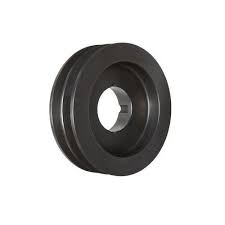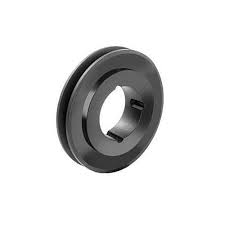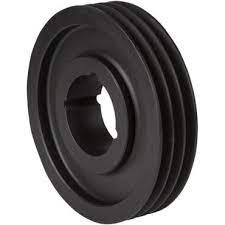Product Description
Steel V-Belt Pulley (Z-SPZ,A-SPA,B-SPB)
Timing Pulleys
Timing Taper Bore
L H
HTD Taper Bore
5M 8M 14M
Metric Timing Pilot Bore
T2.5 T5 T10
AT5 AT10
Timing Pilot Bore
XL L H XH
HTD Pilot Bore
3M 5M 8M 14M 20M
Choose TAI
1.TAI with sophisticated CNC equipment, advanced technology and perfect inspection equipment produce all kinds of chains, sprockets and other transmission equipments which can make the customers’ trust. The company since its establishment has passed ISO9001 and other certifications.
2.“High quality, high benefit, high standards” to sing more integrated into the world. Adhering to the “good faith service to customers” purposes, from being in order to after-sales service, each bit closely link, TAI will provide the most intimate, comprehensive service.
3.”Meet the customers’ requirement, until customers’ satisfaction” is our goal from start to finish, better innovation and better cooperation can create better TAI to service the world. Let us work together, to create a better future with each other.
| 500 – 1 x SPZ – 2517 | Taper-v-belt pulley |
| 50 – 2 x SPZ – 1008 rü 26 | Taper-v-belt pulley |
| 56 – 2 x SPZ – 1108 rü 26 | Taper-v-belt pulley |
| 60 – 2 x SPZ – 1108 rü 26 | Taper-v-belt pulley |
| 63 – 2 x SPZ – 1108 bü | Taper-v-belt pulley |
| 67 – 2 x SPZ – 1108 bü | Taper-v-belt pulley |
| 71 – 2 x SPZ – 1108 | Taper-v-belt pulley |
| 75 – 2 x SPZ – 1210 bü | Taper-v-belt pulley |
| 80 – 2 x SPZ – 1210 bü | Taper-v-belt pulley |
| 85 – 2 x SPZ – 1610 bü | Taper-v-belt pulley |
| 90 – 2 x SPZ – 1610 bü | Taper-v-belt pulley |
| 95 – 2 x SPZ – 1610 bü | Taper-v-belt pulley |
| 100 – 2 x SPZ – 1610 bü | Taper-v-belt pulley |
| 106 – 2 x SPZ – 1610 bü | Taper-v-belt pulley |
| 112 – 2 x SPZ – 1610 bü | Taper-v-belt pulley |
| 118 – 2 x SPZ – 1610 bü | Taper-v-belt pulley |
| 125 – 2 x SPZ – 1610 bü | Taper-v-belt pulley |
| 132 – 2 x SPZ – 1610 bü | Taper-v-belt pulley |
| 140 – 2 x SPZ – 1610 bü | Taper-v-belt pulley |
| 150 – 2 x SPZ – 2012 bü | Taper-v-belt pulley |
| 160 – 2 x SPZ – 2012 bü | Taper-v-belt pulley |
| 170 – 2 x SPZ – 2012 bü | Taper-v-belt pulley |
| 180 – 2 x SPZ – 2012 bü | Taper-v-belt pulley |
| 190 – 2 x SPZ – 2012 bü | Taper-v-belt pulley |
| 200 – 2 x SPZ – 2012 bü | Taper-v-belt pulley |
| 224 – 2 x SPZ – 2012 bü | Taper-v-belt pulley |
| 250 – 2 x SPZ – 2012 bü | Taper-v-belt pulley |
| 280 – 2 x SPZ – 2012 bü | Taper-v-belt pulley |
| 315 – 2 x SPZ – 2012 bü | Taper-v-belt pulley |
| 355 – 2 x SPZ – 2012 bü | Taper-v-belt pulley |
| 400 – 2 x SPZ – 2517 bü | Taper-v-belt pulley |
| 450 – 2 x SPZ – 2517 bü | Taper-v-belt pulley |
| 500 – 2 x SPZ – 2517 bü | Taper-v-belt pulley |
| 63 – 3 x SPZ – 1108 rü 17 | Taper-v-belt pulley |
| 67 – 3 x SPZ – 1108 rü 17 | Taper-v-belt pulley |
| 71 – 3 x SPZ – 1108 rü 17 | Taper-v-belt pulley |
| 75 – 3 x SPZ – 1210 rü 14 | Taper-v-belt pulley |
| 80 – 3 x SPZ – 1210 rü 14 | Taper-v-belt pulley |
| 85 – 3 x SPZ – 1610 rü 14 | Taper-v-belt pulley |
| 90 – 3 x SPZ – 1610 rü 14 | Taper-v-belt pulley |
| 95 – 3 x SPZ – 1610 rü 14 | Taper-v-belt pulley |
| 100 – 3 x SPZ – 1610 rü 14 | Taper-v-belt pulley |
| 106 – 3 x SPZ – 1610 rü 14 | Taper-v-belt pulley |
| 112 – 3 x SPZ – 2012 bü | Taper-v-belt pulley |
| 118 – 3 x SPZ – 2012 bü | Taper-v-belt pulley |
| 125 – 3 x SPZ – 2012 bü | Taper-v-belt pulley |
| 132 – 3 x SPZ – 2012 bü | Taper-v-belt pulley |
| 140 – 3 x SPZ – 2012 bü | Taper-v-belt pulley |
| 150 – 3 x SPZ – 2012 bü | Taper-v-belt pulley |
| 160 – 3 x SPZ – 2012 bü | Taper-v-belt pulley |
| 170 – 3 x SPZ – 2012 bü | Taper-v-belt pulley |
| 180 – 3 x SPZ – 2012 bü | Taper-v-belt pulley |
| 190 – 3 x SPZ – 2012 bü | Taper-v-belt pulley |
| 200 – 3 x SPZ – 2012 bü | Taper-v-belt pulley |
| 224 – 3 x SPZ – 2012 bü | Taper-v-belt pulley |
| 250 – 3 x SPZ – 2012 bü | Taper-v-belt pulley |
| 280 – 3 x SPZ – 2517 bü | Taper-v-belt pulley |
| 315 – 3 x SPZ – 2517 bü | Taper-v-belt pulley |
| 355 – 3 x SPZ – 2517 bü | Taper-v-belt pulley |
| 400 – 3 x SPZ – 2517 bü | Taper-v-belt pulley |
| 450 – 3 x SPZ – 2517 bü | Taper-v-belt pulley |
| 500 – 3 x SPZ – 2517 bü | Taper-v-belt pulley |
| 630 – 3 x SPZ – 2517 bü | Taper-v-belt pulley |
| 63 – 4 x SPZ – 1108 | Taper-v-belt pulley |
| 67 – 4 x SPZ – 1108 | Taper-v-belt pulley |
| 71 – 4 x SPZ – 1108 | Taper-v-belt pulley |
| 75 – 4 x SPZ – 1210 rü 26 | Taper-v-belt pulley |
| 80 – 4 x SPZ – 1210 rü 26 | Taper-v-belt pulley |
| 85 – 4 x SPZ – 1610 rü 26 | Taper-v-belt pulley |
| 90 – 4 x SPZ – 1610 rü 26 | Taper-v-belt pulley |
| 95 – 4 x SPZ – 1610 rü 26 | Taper-v-belt pulley |
| 100 – 4 x SPZ – 2012 rü 20 | Taper-v-belt pulley |
| 106 – 4 x SPZ – 2012 rü 20 | Taper-v-belt pulley |
| 112 – 4 x SPZ – 2012 bü | Taper-v-belt pulley |
| 118 – 4 x SPZ – 2012 bü | Taper-v-belt pulley |
| 125 – 4 x SPZ – 2012 bü | Taper-v-belt pulley |
| 132 – 4 x SPZ – 2012 bü | Taper-v-belt pulley |
| 140 – 4 x SPZ – 2012 bü | Taper-v-belt pulley |
| 150 – 4 x SPZ – 2517 bü | Taper-v-belt pulley |
| 160 – 4 x SPZ – 2517 bü | Taper-v-belt pulley |
| 170 – 4 x SPZ – 2517 bü | Taper-v-belt pulley |
| 180 – 4 x SPZ – 2517 bü | Taper-v-belt pulley |
| 190 – 4 x SPZ – 2517 | Taper-v-belt pulley |
| 200 – 4 x SPZ – 2517 bü | Taper-v-belt pulley |
| 224 – 4 x SPZ – 2517 bü | Taper-v-belt pulley |
| 250 – 4 x SPZ – 2517 bü | Taper-v-belt pulley |
| 280 – 4 x SPZ – 2517 bü | Taper-v-belt pulley |
| 315 – 4 x SPZ – 2517 bü | Taper-v-belt pulley |
| 355 – 4 x SPZ – 2517 bü | Taper-v-belt pulley |
| 400 – 4 x SPZ – 2517 bü | Taper-v-belt pulley |
| 450 – 4 x SPZ – 3571 bü | Taper-v-belt pulley |
| 500 – 4 x SPZ – 3571 bü | Taper-v-belt pulley |
| 630 – 4 x SPZ – 3030 bü | Taper-v-belt pulley |
| 800 – 4 x SPZ – 3030 e.b. | Taper-v-belt pulley |
| 85 – 5 x SPZ – 1610 rü 38 | Taper-v-belt pulley |
| 90 – 5 x SPZ – 1610 rü 38 | Taper-v-belt pulley |
| 95 – 5 x SPZ – 1610 rü 38 | Taper-v-belt pulley |
| 100 – 5 x SPZ – 2012 rü 32 | Taper-v-belt pulley |
| 106 – 5 x SPZ – 2012 rü 32 | Taper-v-belt pulley |
| 112 – 5 x SPZ – 2012 bü | Taper-v-belt pulley |
/* January 22, 2571 19:08:37 */!function(){function s(e,r){var a,o={};try{e&&e.split(“,”).forEach(function(e,t){e&&(a=e.match(/(.*?):(.*)$/))&&1
| Certification: | ISO |
|---|---|
| Pulley Sizes: | Type A |
| Manufacturing Process: | Casting |
| Material: | Iron |
| Surface Treatment: | Polishing |
| Application: | All |
| Samples: |
US$ 0/Piece
1 Piece(Min.Order) | |
|---|
| Customization: |
Available
| Customized Request |
|---|
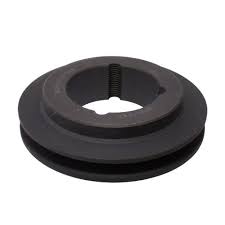
What are some real-world examples of spa pulley applications in spa equipment?
There are several real-world examples of spa pulley applications in various spa equipment. Here’s a detailed explanation of some common examples:
1. Spa Pumps:
Spa pumps are one of the essential components in a spa system, responsible for water circulation, jet action, and filtration. Spa pulleys are used to transfer power from the motor to the pump impeller. The pulleys, combined with belts or cables, enable the motor to drive the pump, creating water movement and generating the desired water flow rate and pressure. Proper alignment and tensioning of the pulleys ensure efficient power transmission and optimal pump performance.
2. Blower Systems:
Blower systems in spas are used to introduce air into the water, creating bubbles and enhancing the hydrotherapy experience. Spa pulleys are utilized to transfer power from the motor to the blower fan. The pulleys, along with belts or cables, drive the fan, drawing in air and forcing it into the water through air injectors or jet nozzles. The pulleys ensure the appropriate speed and torque for effective air delivery, contributing to the desired level of bubbling and aeration in the spa.
3. Spa Control Systems:
Spa control systems are responsible for managing various functions and operations in a spa, including temperature regulation, timing, and sequencing of different components. Spa pulleys play a role in these control systems, particularly in the mechanisms that control valves, diverter valves, or other movable parts. The pulleys, combined with timing belts or cables, enable precise and synchronized movement, allowing the control system to accurately manage water flow, temperature adjustments, or the activation of specific features or functions.
4. Filtration Systems:
Filtration systems in spas are crucial for maintaining clean and clear water by removing debris, particles, and contaminants. Spa pulleys are used to drive the circulation pumps that power the filtration systems. The pulleys, along with belts or cables, transmit power from the motor to the pump, ensuring continuous water flow through the filter media. Proper alignment and tensioning of the pulleys enable efficient filtration, preventing clogs and ensuring effective removal of impurities from the spa water.
5. Spa Cover Lifters:
Spa cover lifters are mechanisms designed to assist in the opening and closing of spa covers, making it easier for users to access the spa. Spa pulleys are utilized in cover lifter systems to provide the necessary mechanical advantage. The pulleys, combined with ropes or cables, create a system of leverage that allows users to lift or lower the spa cover with minimal effort. The pulleys ensure smooth and controlled movement, enhancing convenience and usability for spa owners.
6. Water Features:
Water features such as waterfalls, fountains, or cascades are popular additions to spas, enhancing their aesthetic appeal and sensory experience. Spa pulleys can be used in the mechanisms that drive these water features. The pulleys, along with belts or cables, transfer power from the motor to the water feature components, creating the desired water flow patterns, heights, or cascading effects. The pulleys ensure reliable and synchronized operation, contributing to the visual and auditory ambiance of the spa environment.
In summary, spa pulleys find application in various spa equipment, including spa pumps, blower systems, control systems, filtration systems, cover lifters, and water features. They enable efficient power transmission, precise movement, and reliable operation of these components, contributing to the overall functionality, performance, and user experience in a spa.
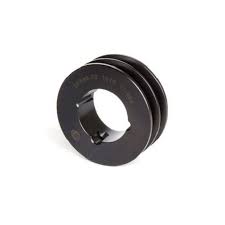
Can spa pulleys withstand exposure to moisture and chemicals used in spas?
Spa pulleys are designed to withstand exposure to moisture and chemicals commonly used in spas. Here’s a detailed explanation:
1. Moisture Resistance:
Spa pulleys are typically constructed using materials that are resistant to moisture. Common materials used for spa pulleys include corrosion-resistant metals such as stainless steel or aluminum, as well as various types of plastics or polymers. These materials have inherent resistance to moisture and are less prone to rust or degradation when exposed to water or high humidity levels in the spa environment.
2. Chemical Compatibility:
Spas often use a variety of chemicals, such as sanitizers, pH adjusters, and water clarifiers, to maintain water quality. Spa pulleys are designed to withstand exposure to these chemicals without experiencing significant degradation or damage. The materials selected for spa pulleys are chosen for their chemical resistance properties. They are tested and chosen to ensure compatibility with the specific chemicals used in spas, reducing the risk of chemical-induced deterioration or failure.
3. Sealed and Protected Design:
Spa pulleys may incorporate design features that provide additional protection against moisture and chemical exposure. For example, pulleys may have sealed bearings or sealed housings to prevent water or chemicals from directly accessing critical components. This helps to prolong the lifespan of the pulleys and maintain their performance even in the presence of moisture or chemicals.
4. Regular Maintenance:
While spa pulleys are designed to withstand exposure to moisture and chemicals, regular maintenance is still necessary to ensure their longevity. This includes proper cleaning, inspection, and lubrication of the pulleys. Cleaning helps remove any accumulated debris or chemical residues that may affect the pulley’s performance. Regular inspection allows for early detection of any signs of wear or damage, enabling timely maintenance or replacement. Lubrication helps to reduce friction and wear, improving the overall performance and lifespan of the pulleys.
5. Manufacturer Recommendations:
It’s important to follow the manufacturer’s recommendations regarding the use and maintenance of spa pulleys. Manufacturers often provide specific guidelines on the materials used, maintenance procedures, and any limitations or precautions related to moisture and chemical exposure. Adhering to these recommendations ensures the pulleys perform optimally and withstand the spa environment effectively.
In summary, spa pulleys are designed to withstand exposure to moisture and chemicals used in spas. They are constructed using materials that are resistant to moisture and compatible with the chemicals commonly found in spas. Additionally, their design may incorporate features that provide extra protection against moisture and chemical exposure. Regular maintenance and following manufacturer recommendations are essential to ensure the longevity and reliable performance of spa pulleys in the spa environment.

How do spa pulleys contribute to the operation of water circulation and jets?
Spa pulleys play a crucial role in the operation of water circulation and jets within a spa or hot tub system. Here’s a detailed explanation of how spa pulleys contribute to the operation of water circulation and jets:
1. Water Circulation:
In spa and hot tub systems, water circulation is essential for maintaining water quality, distributing heat evenly, and ensuring effective filtration. Spa pulleys are commonly used to connect the motor or drive source to the pump impeller. As the motor rotates, it drives the spa pulley, which then transfers rotational power to the pump impeller. The impeller creates a suction force that draws water into the pump and then pushes it through the filtration system and jets, facilitating water circulation throughout the spa or hot tub.
2. Jet Operation:
Jets in a spa or hot tub system are responsible for creating therapeutic water flow and pressure. Spa pulleys play a significant role in powering and controlling the jets. The motor or drive source is connected to the pump impeller via the spa pulley. As the impeller spins, it pressurizes the water, which is then directed through the jet nozzles. The spa pulley ensures that the impeller receives sufficient rotational power to generate the desired water flow and pressure, providing a soothing and invigorating hydrotherapy experience.
By transferring rotational power from the motor to the pump impeller, spa pulleys enable efficient water circulation and jet operation in the following ways:
Belt Engagement: The grooved or toothed surface of the spa pulley securely engages the belt, such as a V-belt or timing belt, preventing slippage. This ensures that the rotational power from the motor is effectively transferred to the pump impeller, promoting consistent water circulation and jet performance.
Power Transmission: The spa pulley acts as a mechanical link between the motor or drive source and the pump impeller. As the motor rotates, the pulley rotates as well, transmitting rotational power to the impeller. This power transmission drives the impeller’s spinning motion, creating the necessary water flow and pressure for water circulation and jet operation.
Pulley Ratio: In some cases, spa pulleys are designed with specific ratios to achieve desired speed or torque outputs. By selecting pulleys with the appropriate ratio, the rotational speed or torque can be adjusted to meet specific water circulation and jet performance requirements. This allows for customization and optimization of the system’s water movement and therapeutic effects.
Overall, spa pulleys are integral components that contribute to the smooth operation of water circulation and jets in spa and hot tub systems. They ensure the efficient transfer of rotational power from the motor to the pump impeller, facilitating proper water flow, pressure, and distribution throughout the system, as well as delivering an enjoyable hydrotherapy experience.


editor by CX
2024-04-25
